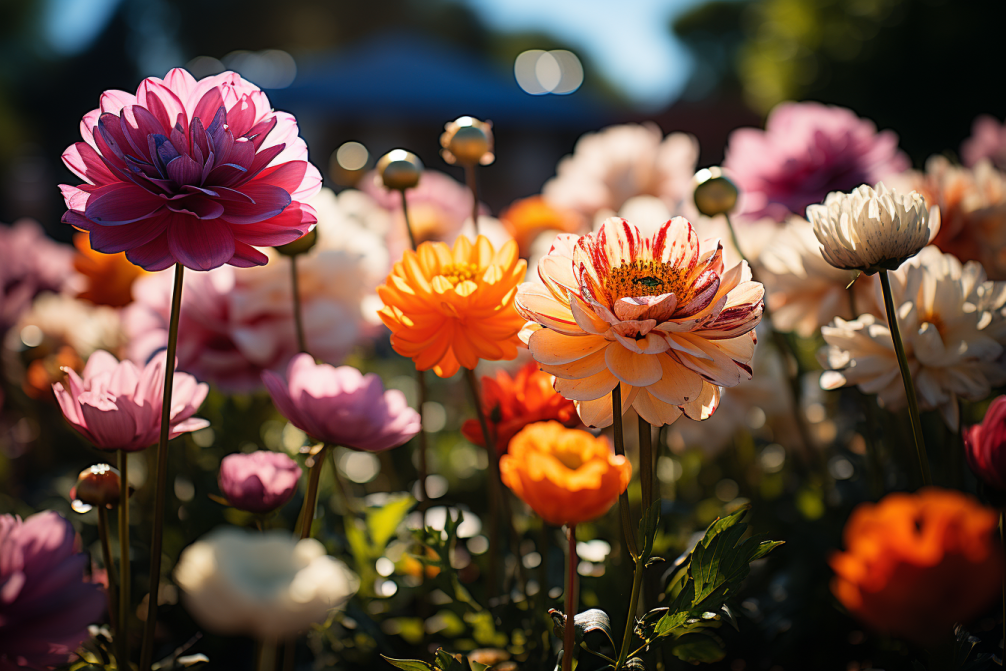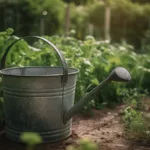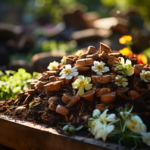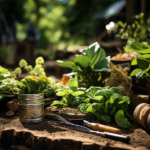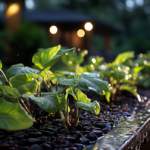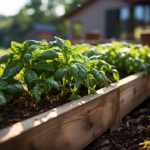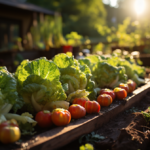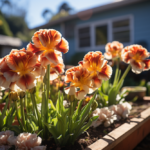Table of Contents
Picking the Perfect Plants: Choosing the Right Flowers for a Vibrant Garden
Hey there, green thumbs and flower enthusiasts! Are you ready to turn your garden into a vibrant, bursting-with-color paradise? Well, you’ve come to the right place! In this guide, we’re going to dive headfirst into the wonderful world of creating a colorful flower garden, starting with one of the most important steps: choosing the right blooms.
Imagine stepping into a garden filled with an explosion of hues – reds, yellows, purples, pinks, and every shade in between. It’s like a living work of art that brings joy to your soul and pleases the eye. But how do you achieve such a visual feast?
The secret lies in selecting the perfect flowers that will thrive in your garden and create a symphony of colors. You might be overwhelmed by the sheer variety of options out there, but fear not. We’re here to help you navigate through this maze of petals and make the best choices for your own personal Eden.
From delicate annuals to robust perennials, each flower has its own unique personality and requirements. We’ll explore the different types of flowers, their growing conditions, and the colors they offer. Whether you’re aiming for a stunning display of warm, sunny hues or a dreamy, cool palette, we’ll provide you with tips and tricks to achieve the effect you desire.
So buckle up, grab your gardening gloves, and prepare to embark on a colorful journey that will transform your garden into a mesmerizing oasis. Get ready to unleash your creativity and let nature’s palette paint your garden in breathtaking colors. Let’s dive in and choose the blooms that will make your garden truly sing!
Understanding Your Garden’s Needs: Assessing Light, Soil, and Climate
Creating a colorful flower garden begins with understanding and assessing your garden’s unique needs. By considering factors such as light, soil, and climate, you can select the perfect blooms that will thrive in your outdoor space. So let’s dive in and explore these essential aspects!
1. Light Requirements
Different flowers have varying light requirements, so it’s important to take note of how much sunlight your garden receives. Observe your garden throughout the day and determine whether it’s a full sun, partial sun, or shade area. This information will help you select flowers that will flourish in the available light conditions. Sun-loving flowers like roses, daisies, and zinnias need at least six hours of direct sunlight, while shade-tolerant blooms such as impatiens, hostas, and begonias can thrive with less sun exposure.
2. Soil Condition
Assessing the soil in your garden is crucial for the health and success of your flowers. Take a closer look at the texture, drainage, and pH level of your soil. Sandy soil drains quickly, while clay soil retains more moisture. Loam, which is a balanced mixture of sand, silt, and clay, is considered ideal for most plants. Determine whether your soil is acidic, neutral, or alkaline by conducting a soil test. This information will guide you in selecting flowers that are well-suited to your soil type. For example, roses thrive in slightly acidic soil, while lavender prefers alkaline soil.
3. Climate Considerations
Understanding the climate in your area is essential for choosing flowers that will thrive. Take note of the average annual temperature range, frost dates, and any extreme weather conditions experienced in your region. Some flowers are more suited to cold climates, while others thrive in warm or tropical environments. Consider whether your region has a short growing season or experiences long periods of drought. This knowledge will help you select flowers that will be resilient and adapt well to your specific climate.
By taking the time to understand your garden’s unique needs when it comes to light, soil, and climate, you can make informed decisions when selecting the right flowers. This will set the foundation for a vibrant and flourishing flower garden that will bring beauty and joy to your outdoor space. So get ready to plant and watch your garden come alive with a colorful array of blooms!
Blooming Beauties: Exploring Different Types of Flowers
When it comes to creating a colorful flower garden, the right selection of blooms is the key to success. There are countless types of flowers to choose from, each with its own unique characteristics and beauty. Here are a few popular and stunning options to consider:
1. Roses – Known as the queen of flowers, roses are a timeless choice for adding elegance and romance to any garden. Available in various colors and sizes, they offer an array of fragrances and bloom types, including hybrid teas, floribundas, and climbers.
2. Sunflowers – If you want to bring a splash of sunshine to your garden, sunflowers are the way to go. With their tall stalks and large vibrant blooms, they add a cheerful touch to any landscape. Plant them in a sunny spot, and watch these sun-loving beauties reach for the sky.
3. Tulips – These spring favorites are famous for their dazzling colors and symmetrical petals. From classic reds and yellows to unique varieties in shades of pink, purple, and even black, tulips are sure to make a statement in your garden. Remember to plant them in the fall for beautiful blooms in the spring.
4. Daisies – With their simple yet charming appearance, daisies bring a sense of cheerfulness and innocence. Whether it’s the classic white blooms of the Shasta daisy or the vibrant colors of gerbera daisies, these delightful flowers are perfect for adding a touch of whimsy to your garden.
5. Lilies – Lilies are known for their elegant and fragrant blooms that come in various shapes, sizes, and colors. From the regal tiger lily to the graceful Asiatic and Oriental lilies, these flowers add a touch of sophistication and grace to any garden or bouquet.
6. Marigolds – If you’re looking for a fuss-free flower that offers a burst of vibrant color, marigolds are an excellent choice. These hardy annuals come in shades of orange, yellow, and red, and they not only brighten up your garden but also act as natural pest deterrents.
Remember, these are just a few examples of the wide variety of flowers available. When selecting blooms for your garden, consider factors such as growth habits, bloom time, and care requirements. By incorporating a variety of types, you can create a visually stunning and dynamic flower garden that blooms throughout the growing season.
So go ahead, explore the world of blooming beauties, and choose the flowers that speak to your heart and imagination. With the right selection, your garden will be transformed into a vibrant and colorful sanctuary filled with nature’s most magnificent treasures.
Color Combinations: Creating Harmonious Flower Groupings
When it comes to creating a colorful flower garden, one of the most exciting aspects is playing with different color combinations. Choosing the right colors and creating harmonious flower groupings can elevate the beauty of your garden to a whole new level. Here are some tips to help you create stunning color combinations:
1. Complementary Colors – One way to create visual impact is by pairing complementary colors. These are colors that sit opposite each other on the color wheel, such as purple and yellow, or red and green. The contrasting hues create a vibrant and eye-catching display.
2. Monochromatic Hues – If you prefer a more sophisticated and calming look, consider opting for monochromatic flower groupings. Stick to different shades and tints of a single color, such as various shades of pink or blue. This creates a soothing and unified look that adds a touch of elegance to your garden.
3. Analogous Color Schemes – Another way to create harmony is by choosing analogous colors. These are colors that sit next to each other on the color wheel, such as purple and blue, or orange and red. This creates a more subtle and cohesive color palette that flows seamlessly from one shade to another.
4. Warm and Cool Contrasts – Playing with warm and cool colors can create a dynamic and balanced effect. Pair warm-toned flowers, such as reds, oranges, and yellows, with cool-toned flowers, such as blues, purples, and whites. This contrast adds depth and visual interest to your garden.
5. Mood and Theme – Consider the mood and theme you want to create in your garden. For a vibrant and energetic feel, opt for bold and contrasting colors. For a romantic and dreamy atmosphere, go for soft and pastel hues. Let your personal style and desired ambience guide your color choices.
Remember, there are no hard and fast rules when it comes to choosing colors for your flower garden. Ultimately, it’s about selecting combinations that bring you joy and reflect your personal taste. Don’t be afraid to experiment and have fun with different color pairings.
By carefully considering color combinations and creating harmonious flower groupings, you can transform your garden into a visual masterpiece. So start exploring all the wonderful hues nature has to offer, and let your creativity bloom in a garden bursting with color!
Annuals or Perennials: Choosing the Right Lifespan for Your Garden
When it comes to selecting the right blooms for your colorful flower garden, one important consideration is the lifespan of the flowers. Choosing between annuals and perennials can greatly impact the maintenance and longevity of your garden. Here’s what you need to know to make the right decision:
1. Annuals
- Annual flowers complete their lifecycle within one growing season.
- They grow from seed, produce flowers, set seeds, and then die off.
- Some popular annuals include marigolds, petunias, zinnias, and impatiens.
- Annuals are known for their vibrant colors, continuous blooming, and versatility.
- They are an excellent choice for adding quick bursts of color and filling in gaps in your garden.
- Annuals require regular seeding or purchasing of new plants each year.
2. Perennials
- Perennial flowers have a longer lifespan and come back year after year.
- They establish roots and go through dormancy during colder months, then resprout and bloom in spring.
- Some popular perennials include roses, daylilies, coneflowers, and daisies.
- Perennials offer a range of colors, textures, and heights, adding depth and structure to your garden.
- They require less maintenance once established than annuals, but may require some occasional care and division.
- Perennials are an investment in your garden, as they provide continued beauty for years to come.
Making the Right Choice
When choosing between annuals and perennials for your garden, consider your preferences and gardening goals. Here are a few factors to consider:
- Time and Effort: Annuals require more frequent replanting, while perennials offer long-term beauty with less effort.
- Cost: Annuals are often less expensive initially, while perennials require a greater upfront investment but provide long-term value.
- Blooming Period: Annuals tend to bloom continuously throughout the season, while perennials may have shorter but impactful flowering periods.
- Flexibility: Annuals offer more flexibility in changing your garden’s color scheme each year, while perennials provide consistent beauty and stability.
Ultimately, a combination of annuals and perennials can create a vibrant and evolving garden that combines the best of both worlds. So consider your personal preferences, garden goals, and the unique characteristics of each flower type as you choose the right lifespan for your garden.
Conclusion
In conclusion, creating a colorful flower garden is a delightful journey filled with choices and creativity. By understanding your garden’s conditions, selecting the right flower types, considering color combinations, and choosing the lifespan that suits your needs, you can create a mesmerizing oasis right in your backyard.
Remember to assess the sunlight, soil, and climate in your garden to ensure the optimal conditions for your blooms. Whether you prefer the classic elegance of roses, the cheerful vibrancy of sunflowers, or the graceful beauty of lilies, each flower type brings its own unique charm to the garden.
Play with different color combinations, whether through complementary contrasts, monochromatic themes, or analogous schemes, to create a harmonious display that reflects your personal style and desired mood. And when choosing between annuals and perennials, consider factors like maintenance, cost, and blooming periods to find the perfect balance between your gardening goals and practicality.
So, get your gardening gloves on, start planting, and let your imagination bloom. With the right blooms in your garden, you’ll have a colorful sanctuary that brings joy, beauty, and tranquility all year round. Happy gardening!

